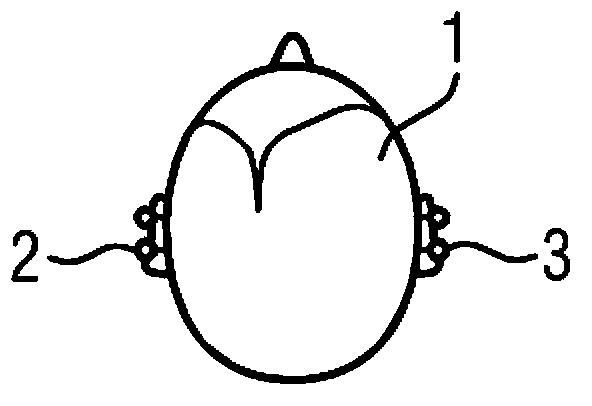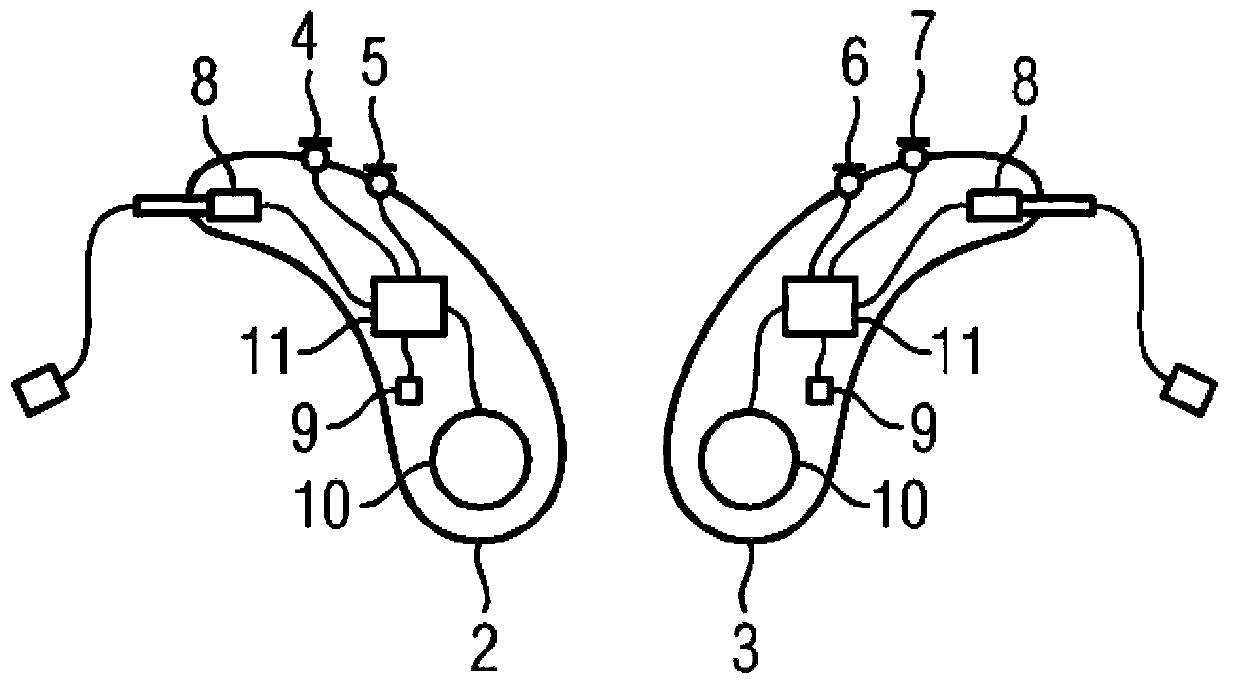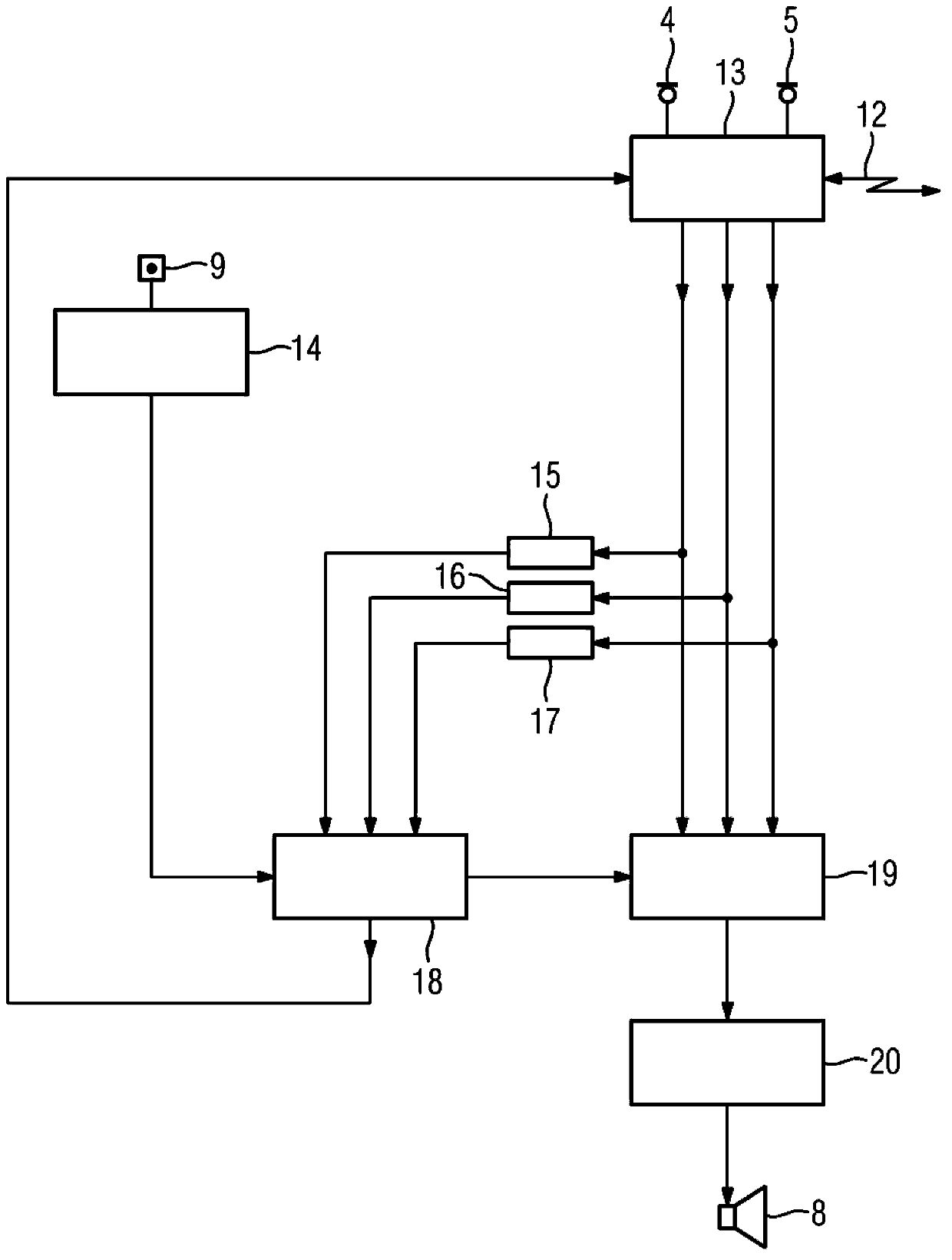Method of focusing a hearing instrument beamformer
A technology for hearing aids and formers, used in hearing aids, devices for obtaining desired directional characteristics, frequency/directional characteristics devices, etc., can solve problems such as impossible and difficult to locate sources of interest, etc.
- Summary
- Abstract
- Description
- Claims
- Application Information
AI Technical Summary
Problems solved by technology
Method used
Image
Examples
Embodiment Construction
[0056] figure 1 A user 1 with a left hearing aid 2 and a right hearing aid 3 is shown schematically in plan view. The microphones of the left and right hearing aids 2 , 3 are each combined to form a directional microphone arrangement, so that it is possible to direct the respective beams essentially either forwards or backwards as seen by the user 1 . Furthermore, it is possible to connect the left and right hearing aids 2 , 3 by means of a wireless link (e2e) in order to realize a binaural configuration with a binaural microphone arrangement. As seen from the user 1 , essentially the directions to the right and to the left are thereby achieved as further beam directions of the device. The automatic focusing of the beams can be carried out both individually for each monaural hearing aid (front / rear) and jointly for the binaural devices (right / left).
[0057] figure 2 Left and right hearing aids 2, 3 are schematically shown together with the main signal processing component...
PUM
 Login to View More
Login to View More Abstract
Description
Claims
Application Information
 Login to View More
Login to View More - R&D
- Intellectual Property
- Life Sciences
- Materials
- Tech Scout
- Unparalleled Data Quality
- Higher Quality Content
- 60% Fewer Hallucinations
Browse by: Latest US Patents, China's latest patents, Technical Efficacy Thesaurus, Application Domain, Technology Topic, Popular Technical Reports.
© 2025 PatSnap. All rights reserved.Legal|Privacy policy|Modern Slavery Act Transparency Statement|Sitemap|About US| Contact US: help@patsnap.com



